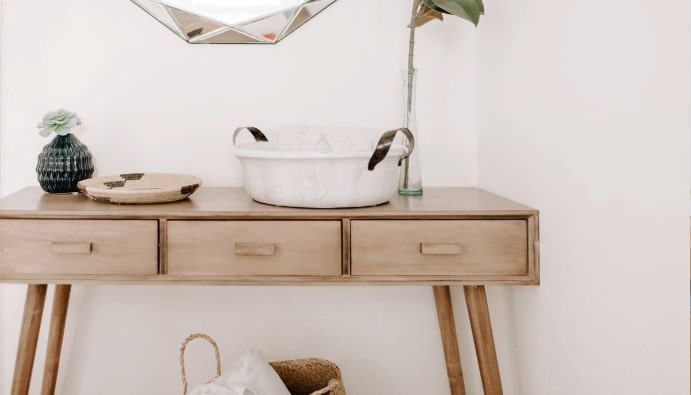GB/T 3324: Wooden Furniture - General Technical Requirments
Testing and Analysis of Wooden Furniture

What is GB/T 3324?
GB/T 3324 is a standard that sets out the general technical requirements for wooden furniture in China. This standard covers many different aspects of furniture, from physical properties to material quality, durability and safety. Manufacturers of wooden furniture must design and manufacture their products in accordance with this standard. These requirements are critical to ensure the safety, functionality and aesthetic value of products.
The GB/T 3324 standard contains all requirements for terms and definitions, classification, requirements, test methods, inspection rules and marking, instructions for use, packaging, transportation and storage of wooden furniture.
Standard Requirements
- Identification of main dimensions and their deviations
- Determination of shape and position tolerances
- Investigation of moth damage in wood materials
- Determination of moisture content of wood
- Color removal and color loss control
- Physical and chemical performance testing of paint film coating
- Determination of the resistance of the paint film to liquids
- Determination of scratch resistance
- Determining resistance to pollution
- Determination of impact resistance
- Determination of color fastness
- Corrosion resistance test for metal handles
- Strength and durability of the tables
- Stability of chairs and stools
- Sturdiness and durability of chairs and stools
- Stability of cabinets
- Determination of volatile organic compounds and migrating elements
- Determination of decomposable carcinogenic aromatic amine dyes in textile fabrics
- Determination of skin-degradable aromatic amine dyes
- Determination of flame retardancy
Wooden furniture types to be exported to China must undergo tests and analyzes within the scope of GB/T 3324 standard. Products that prove their compliance with GB/T 3324 standard can export products to China with CCC certificate.
Scope of GB / T 3324 Standard
TheGB/T 3324 standard specifically covers the following main topics:
1. Materials and Durability
- Wood Type and Quality: The quality, type and characteristics of the wood used in the construction of furniture are important. Wooden furniture must be resistant to water, heat and humidity changes. For this reason, the durability of the wood material used must meet certain standards to ensure a long life.
- Durability Tests: The durability of wooden furniture should be tested for factors such as carrying capacity, deformations that may occur during assembly or use. The results of durability tests provide information about the quality level of the product.
2. Functionality and Design
- Ergonomics: In the design of furniture, the comfort of the user should be prioritized. This requires sofas, chairs, tables and other furniture to have ergonomic features.
- Ease of Use: Functionality is also important in the design of wooden furniture. Drawers that can be opened and closed easily, robust hinge systems and designs that make the user's life easier are among the requirements specified in the standards.
3. Aesthetics and Appearance
- Surface Treatments: The surface of wooden furniture should be smooth and resistant to scratches, stains and chemicals. The varnishes, paints or lacquers used on the outer surfaces of the furniture should not be harmful to health and should look aesthetically smooth.
- Color Harmony: The color harmony of the furniture is also important. This is an important requirement, especially for furniture used indoors. The quality and consistency of color choices are essential to ensure the aesthetic integrity of the furniture.
4. Assembly and Installation
- Ease of Assembly: Wooden furniture should be designed in such a way that it can be assembled by users. Assembly instructions should be clear and understandable and all necessary equipment (screws, bolts, etc.) should be provided.
- Stability and Balance: Proper assembly and balanced placement of furniture is important. Unstabilized or unstable furniture can jeopardize user safety.
5. Safety
- Sharp Edges and Corners: Furniture should be free of sharp edges and corners. Rounded edges and corners should be preferred to avoid potential danger for children or pets.
- Harmful Chemicals: The limits of harmful chemicals, especially formaldehyde and similar harmful chemicals, in the materials used in the production of furniture should comply with the levels determined for health. This is necessary to ensure that products do not adversely affect user health.
Nanolab Laboratories Group continues to provide services within the scope of Consumer Product Tests. We also provide services in Textile Analysis.
Contact us for more information.
You can follow us on LinkedIn for up-to-date news and posts about our services.
Follow our Instagram account to be informed about our latest blog posts.

